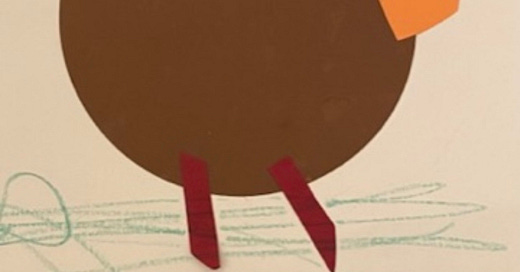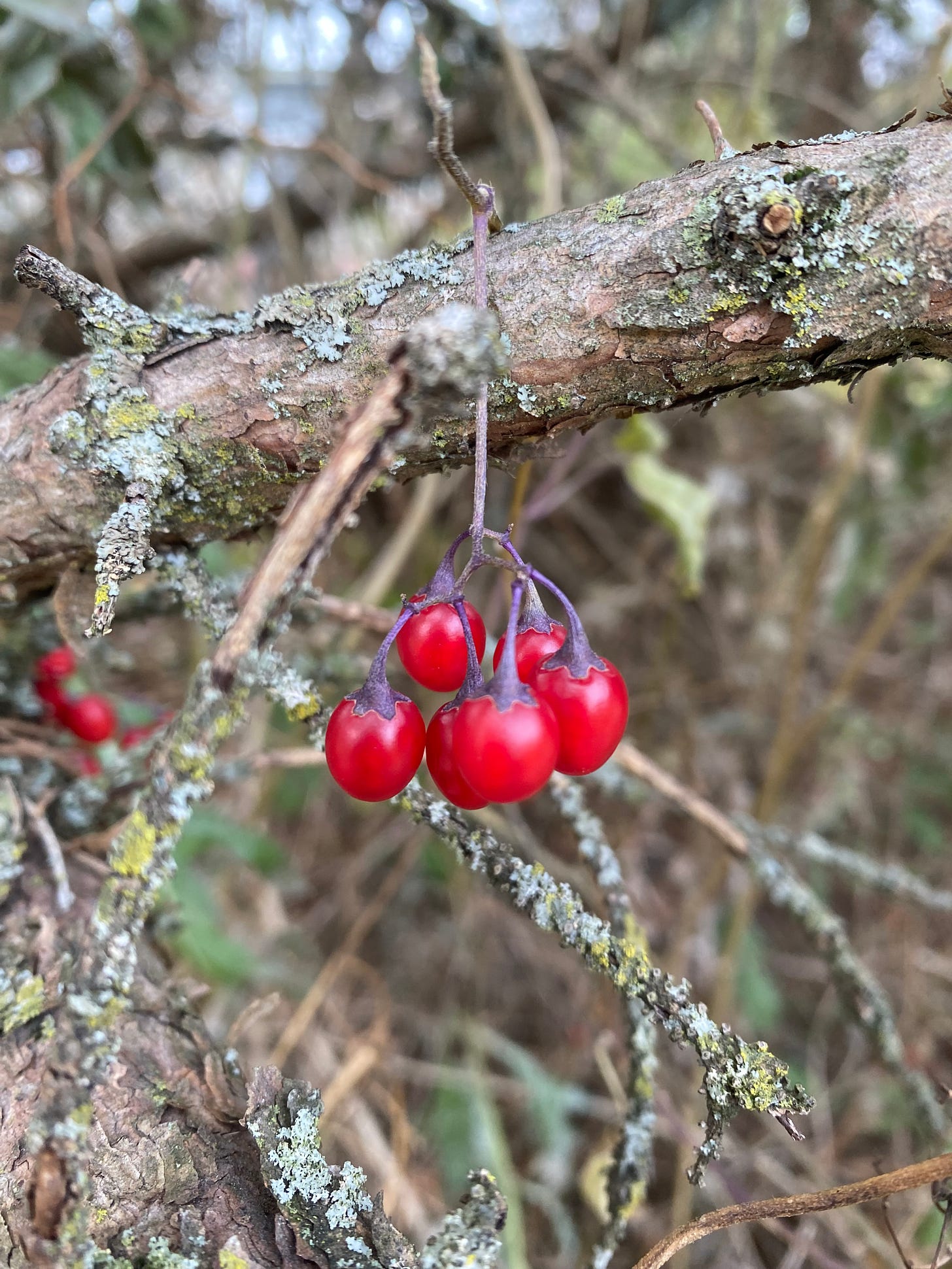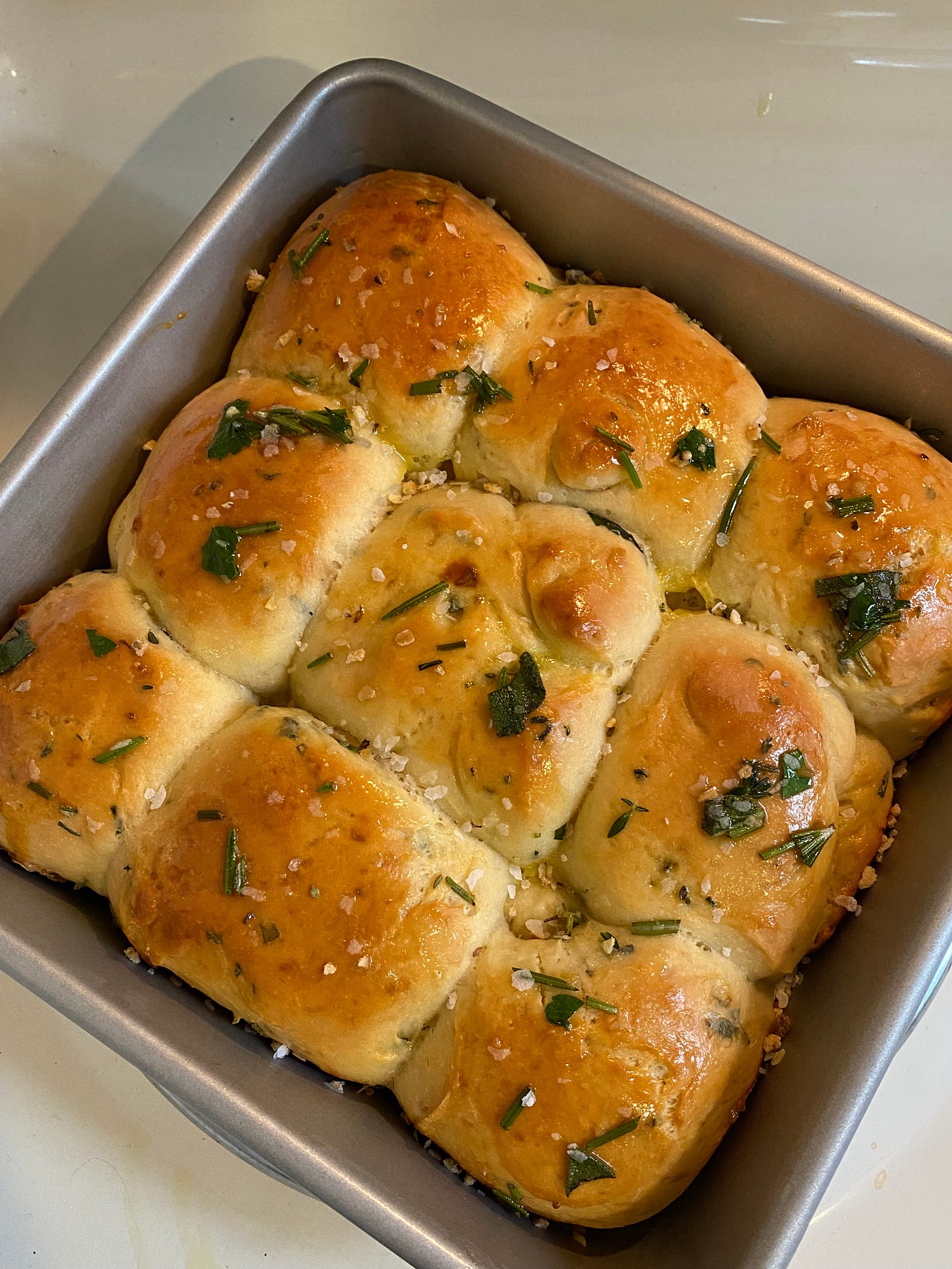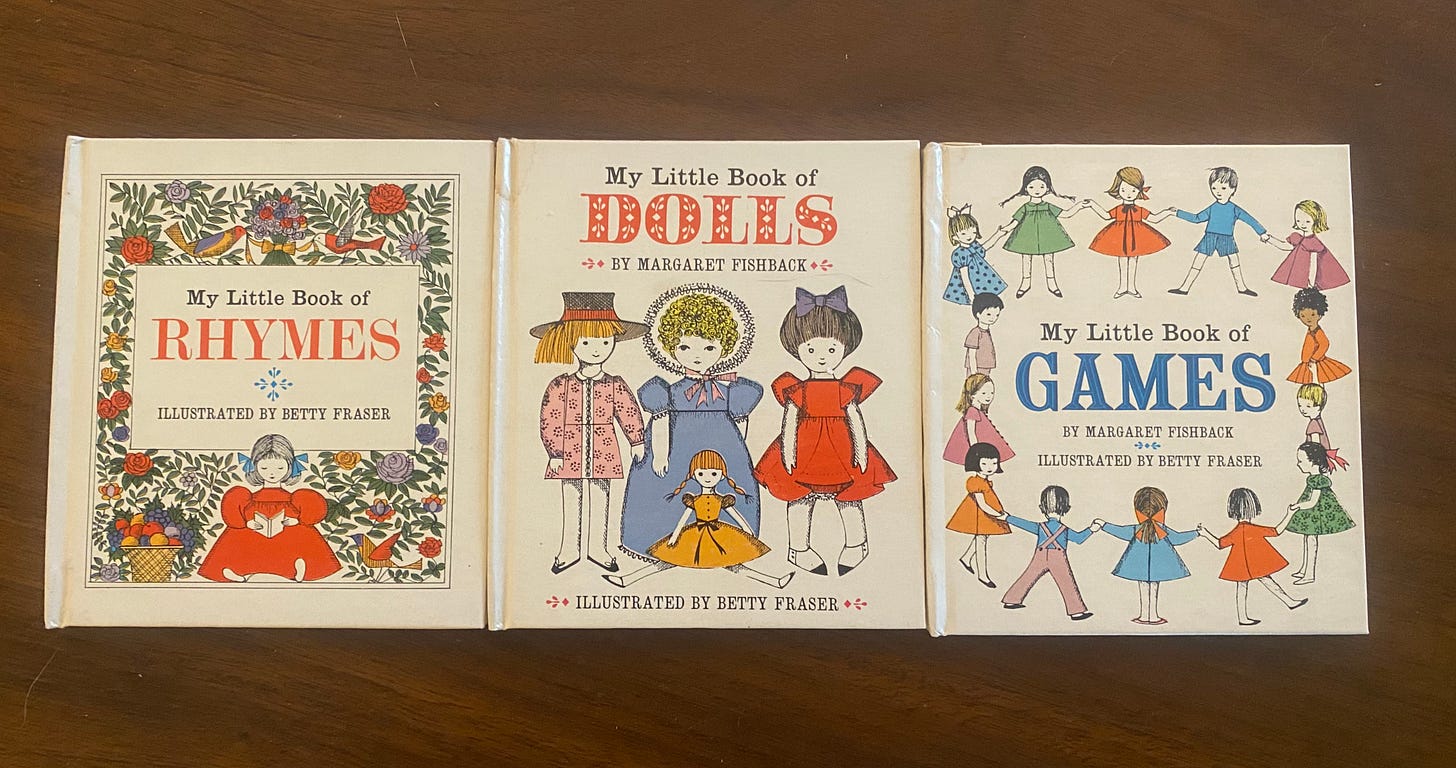Rose, Bud, Thorn for November, plus Autumn Baking and Poems
I’ve enjoyed working on this post for the last week and now it’s a few days past Thanksgiving, and I’m feeling grateful and a little wistful. So let’s begin with Rose, Bud, Thorn. You know about that, right? The rose is something you’re happy about or grateful for, a success or a highlight; the bud is something that is catching your attention, something you’re anticipating, something you’re excited about it; the thorn, of course, is a current challenge.
Spending Thanksgiving in Northern Michigan with family was definitely my rose. Lake Michigan never disappoints.
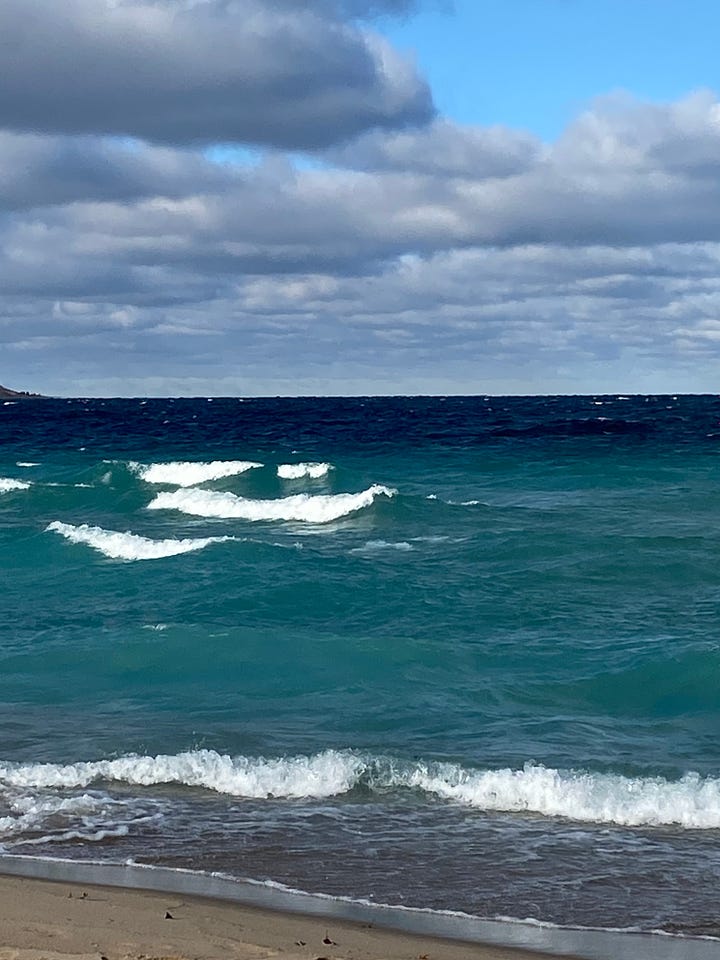
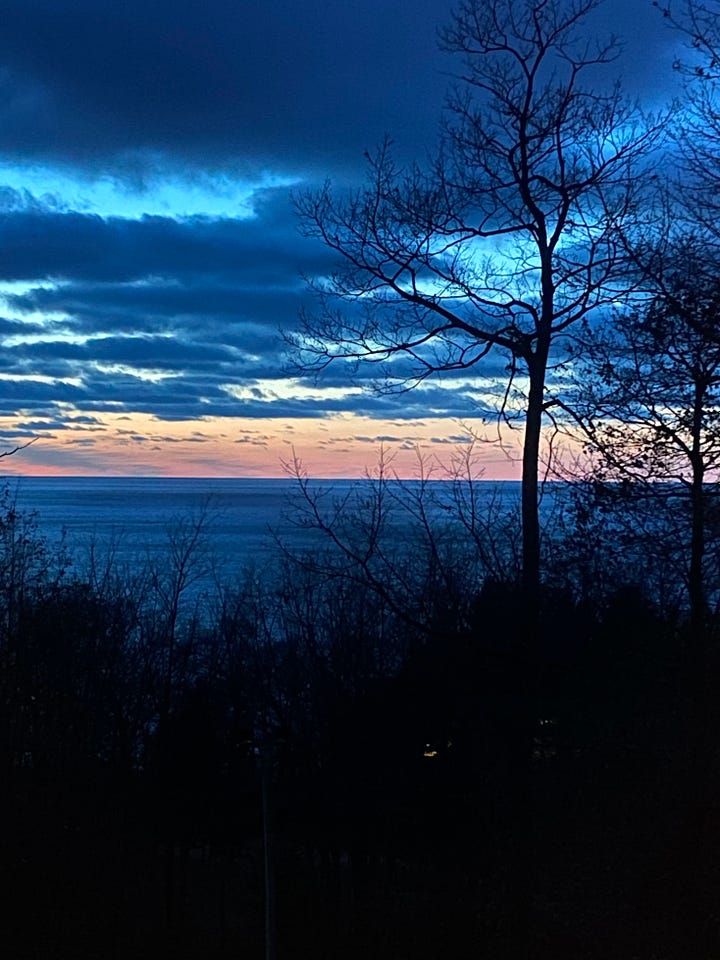
The ongoing bud is Cake & Poetry and all of you and your support, which I appreciate so much! I’m having fun and I hope you are too. And I hope you’re finding something here that inspires you or causes you to reminisce or provides some practical know-how. Extra special thanks to those of you who are paid supporters. Let me know if there’s something in particular you’d like to read here, and I’ll do my best.
The thorn is missing my parents every day in lots of little ways and of course around the holidays. My mom was an expert at making gravy, and even when she didn’t do any of the other holiday cooking anymore, she still made the gravy. This year, at long last, I had success using the Half Baked Harvest make-ahead gravy recipe. If only my mom could have been here! She would have been pleased.
What about you? Rose, bud, thorn?
Ok, let’s start with a poem prompt, shall we?
I’ve used this prompt, or versions of it, with adults and, just last week, with my undergrads. I think of it as a prompt for a poem of gratitude, remembrance, maybe wistfulness but overall thankfulness. But, that said, that was not the case with ENGL 313. Right away I saw that lines that I intended to be positive, my students took in a different (negative) direction. Which was interesting and, to be honest, a little dismaying. Is it a sign of the times? Of their age? Of a tough semester at WVU? I’m not sure. But if you try the prompt, you could let me know which way it goes for you.
This poem should be about 12 lines (or slightly more if you write long). Could be in this order OR you could write these lines individually (literally: on separate sheets of paper) and then pull them at random to create the poem. More than one good poem could emerge. * what brings you here today * something you’ve heard that consoles you and mention who said it) [my students were NOT consoled by anything anyone told them!] * an image of contentment * a lingering fear * a sound like you’d to be * someone who comes to mind just now * a cherished memory * the sky as you're writing this * the last time you cried * a secret talent you have * an animal you saw recently and something it did * something about Thanksgiving * Give your poem a title Takeaways: If you write each moment, each line, so that it stands on its own, you'll get a chance to discover the best order rather than have it predetermined by the story you think you're telling. You'll discover unexpected connections and/or realize why one line is or isn’t a final line or a first line or etc. A small change can make a big difference. And everything you need is everything you have, right at hand. Lots of times, people tell me that my poem prompts don't "go together." But they do!, I always say. The coherence is in you. The story is the story of you, right now. Worrying about coherence, about the lines "going together" or "making sense," will, in all likelihood, make the poem much less interesting. I've seen this over and over with writers of every age. Yes, we do like stories. But button-down story too quickly, and all you've got is anecdote. Poems are not anecdotes.
I can’t quite recall what the story was behind this poem, and I think that’s for the best. Our stories, dramatic in the moment, fade, or flutter off, and thank goodness. This poem appeared in my second book, Inside the Yellow Dress (New Issues, 2001), and must have been written around, oh, 2000. A long time ago now! Glad I can’t recall what prompted the mood! But I still like the poem, even if I’d not quite say these things anymore.
NOVEMBER In the middle of the middle the thing resists, will not be written. So I make a circle, stamp about, clumsy boot prints in the snow. And I step outside-- Call this perspective. Though it isn't. Though I'm incapable, inconsolable, inside still. But who can describe an interior: yellow leaves beneath the show--? I have tried and tried. I have called this "my project" as though to distance-- I have said the bare branches are fine with me, just fine. I have said the loss is exquisite--
Whatever else can be said about this poem, it is a good example, I think, of how story specifics are not always necessary. I write more narratively now that I ever have, but even so... I try to remove the anecdote and write what’s left.
Interestingly, the first several poems in Inside the Yellow Dress begin with the word “so.” “So” is a story word, for sure. If you write fairly non-narratively (or without the specifics we associate with narrative), the little word “so” can do a lot of work to help readers feel that they are inside the cozy space of a story.
I guess this post links Thanksgiving and story and also ancestry, which I’ve been thinking about and which is of course a collection of stories, or bits of stories. I’m Flemish, so another recent “bud” was the discovery of Dark Rye and Honey Cake: Festival Baking from Belgium, the Heart of the Low Countries. My first bake, Pain a la Grecque, is exactly the kind of biscuit / cookie sweet pastry my dad would have liked. Perfect with a cup of tea or coffee. Simple and delicious.
The name does not mean “Greek bread,” by the way; rather, “grecque” is from “grecht,” which refers, according to the book, to “the city canal or waterway that surrounded the cloister where the cookies were distributed.”
Let me know if you try this recipe. And I plan to do more baking from this book and will report again.
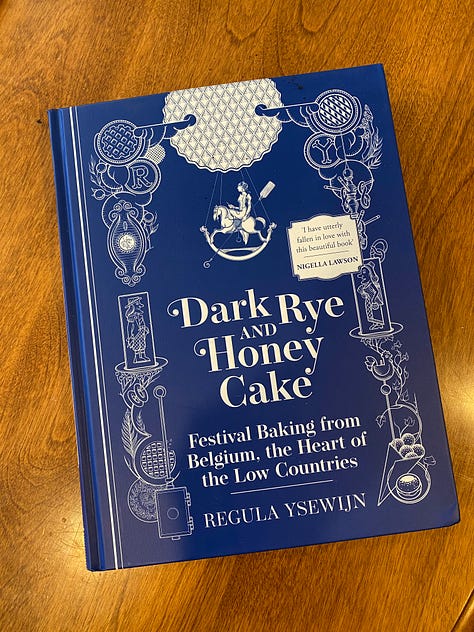
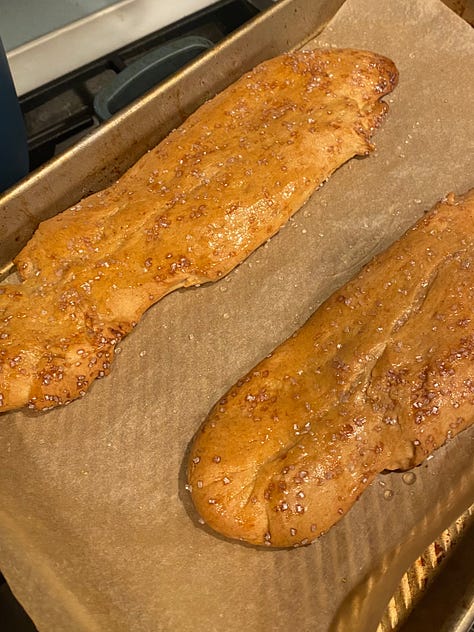
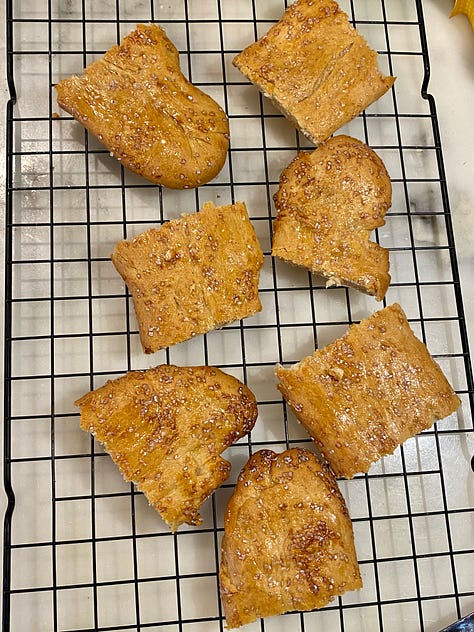
4 cups bread flour
10 tbsp unsalted butter
1 tsp ground cinnamon
3 1/4 tsp instant dry yeast
1 egg
1 1/4 cups whole milk
pinch of salt
1 1/2 cups sparkling sugar
3 tbsp sugar + 3 tbsp water for glaze
Combine flour, butter, cinnamon, and yeast in stand mixer
fitted with the dough hook. Add egg and half of milk and
begin kneading. When absorbed, add the rest of the milk and
knead for five minutes. Let rest for five minutes.
Add the salt and knead for 10 minutes until you have a
smooth, elastic dough. Cover and set aside for 1 hour until
nearly doubled.
Divide the dough into 7 oz chunks. Line as many baking sheets
as you have with parchment.
Roll each chunk of dough in sparkling sugar and shape into a
thin sausage. Transfer to the baking sheets and flatten.
Cover and let rest for 15 minutes.
Preheat the oven to 400.
Flatten the dough further. You're aiming for about 3 inches
wide. Sprinkle again with sugar.
Bake the sheets one at a time for 25-30 minutes until the
cookies are golden brown.
While baking, make a glaze by melting sugar and water. Brush
the warm pain a la grecque with the sugar syrup, cut into
smaller cookies, and then allow to cool. Or, eat warm, which
is what I wisely did.
Though Thanksgiving has come and gone, I want to share a couple of other recipes you might want to try.
For the last few Thanksgivings, I’ve been making the Buttermilk Pumpkin Streusel pie from the Sister Pie cookbook from the Detroit bakery of the same name. This year, I used a new and super helpful Emile Henry ruffled pie dish and I made up my own streusel recipe with coconut. As always, blind baking is key.
For the pie recipe, go here.
For the best crust, I recommend all butter and a touch of vodka. Yes, really. If you’d rather not use vodka, use white (or apple cider) vinegar. That works too. Either way, when you’re adding the ice water, replace a bit of it with vodka (or vinegar). That’s the key to a flaky crust. Oh, and I use a food processor and recommend that as well, if you have one.
In my experience, the original streusel recipe makes way too much. I’ve cut it in half and still had too much. My formula this year: 1/8 cup flour + 1/8 cup brown sugar + 1/8 cup coconut + 1/8 cup pepitas + 1/2 tsp cinnamon + good dash of cloves + 1/4 cup butter. Mix and bake as directed in the original recipe. This streusel was good, but next time I might just do toasted coconut.
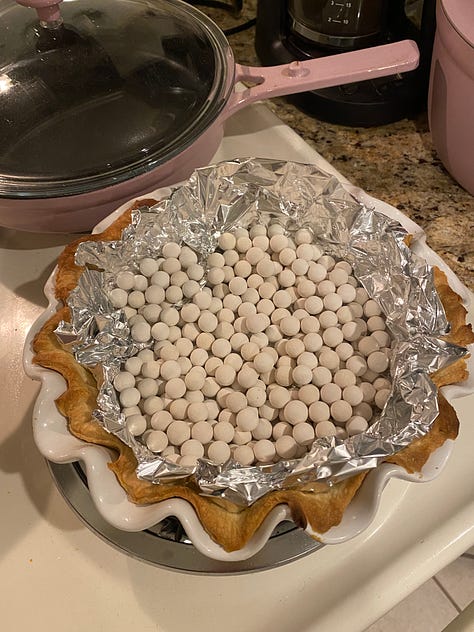
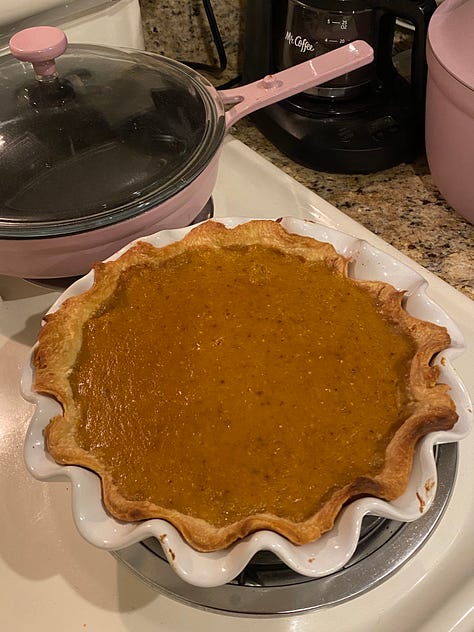
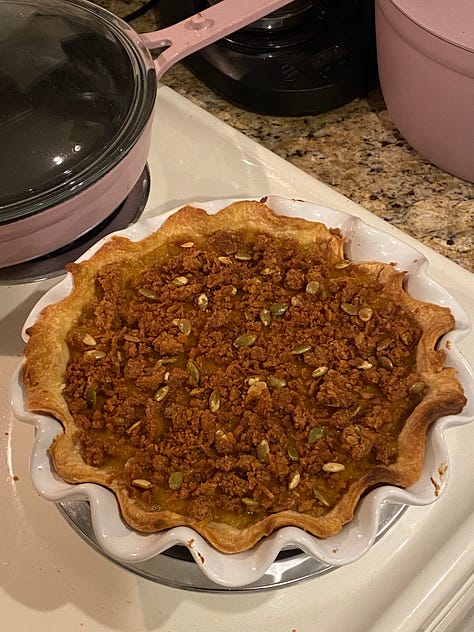
I also made these herb rolls for Thanksgiving. One substitution: 5% Greek yogurt for the sour cream. This was a half batch.
Lastly, I wanted to tell you about a recent discovery, another “bud”: this charming trio of books by Margaret Fishback with illustrations by Betty Fraser. Does anyone remember these?
I’ve also been charmed by these vintage decorations that I saved from my childhood and was happy to stumble upon recently.
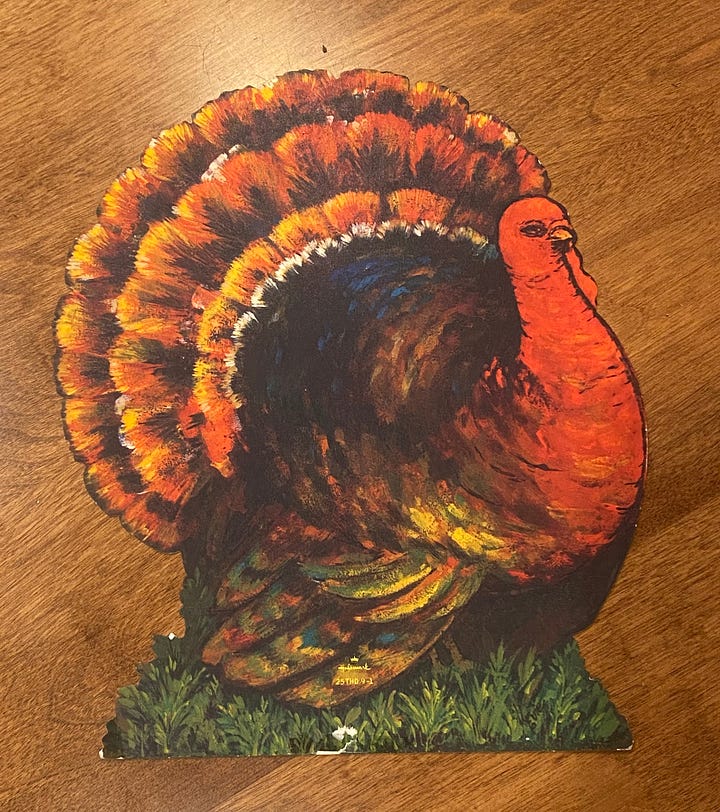
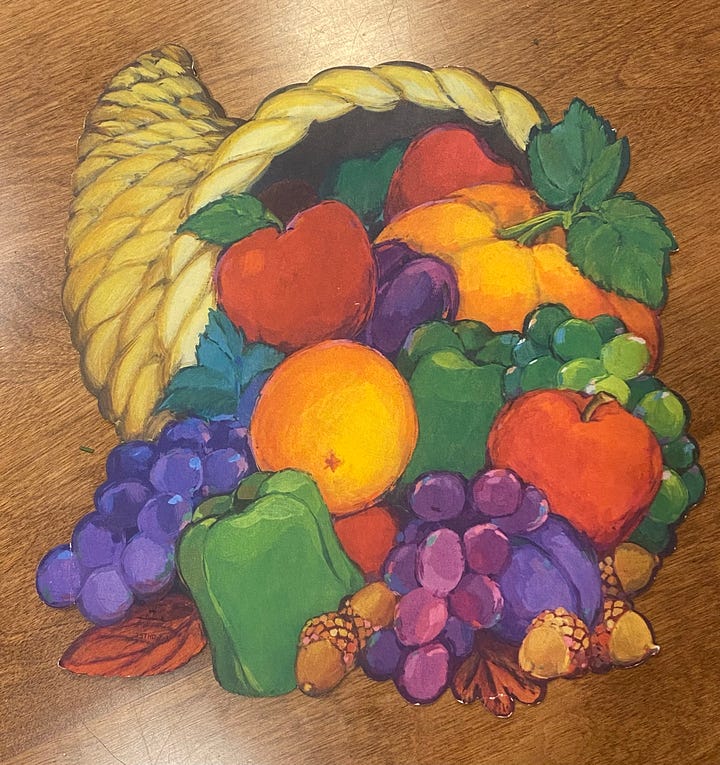
And even as I do fondly remember these decorations and the fourth grade Thanksgiving play I was in (couldn’t find a pic of that, unfortunately), I’m also thinking about how the place I call home is the traditional territory of the Anishinaabe nations of the Council of Three Fires: the Ojibwe (also called the Chippewa or the Ojibway), Ottawa (also called the Odawa), and Potawatomi. Lots of rose, bud, thorn, for sure.
Again, what about you? Rose, bud, thorn. Might be a poem there.
As always, thanks for reading! Take good care. More soon.

